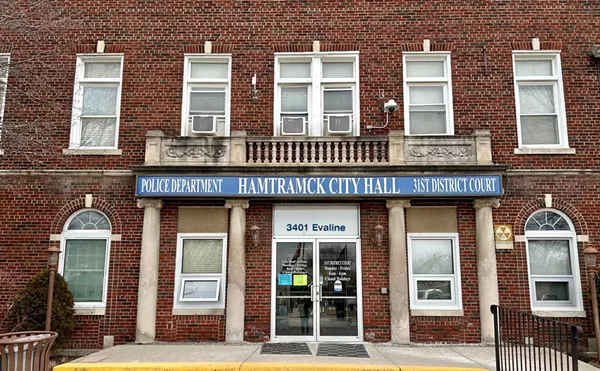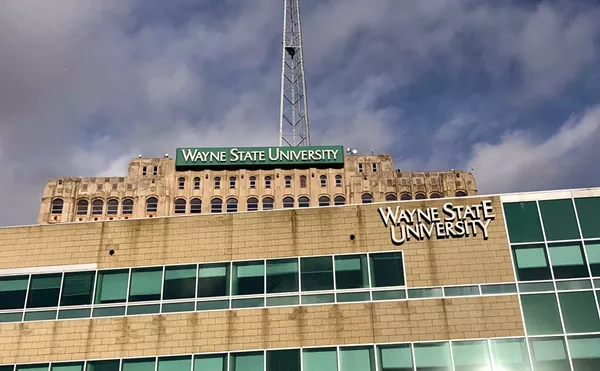
Audio By Carbonatix
[
{
"name": "GPT - Leaderboard - Inline - Content",
"component": "35519556",
"insertPoint": "5th",
"startingPoint": "3",
"requiredCountToDisplay": "3",
"maxInsertions": 100,
"adList": [
{
"adPreset": "LeaderboardInline"
}
]
}
]
Lots of people, including me, spend a lot of time analyzing what is wrong with Detroit. Penny Bailer leads a corps of young people who are helping to fix it, one child and one neighborhood at a time. It is called, simply, City Year. The kids who join don’t get much publicity, they don’t cost much money, and they do enormous good.
And naturally, the clumsy idiots in Washington are trying to stop them. Here’s the scoop. City Year, started in Boston, came to Detroit in 1999, largely through the efforts of Gail Warden, a fellow “old white guy” who ran Henry Ford Health Systems but realized life is about something more than maximizing health care profits.
The best way to describe City Year is as a local, domestic Peace Corps that hires young adults age 17-24. It works them 50 hours or more a week doing intense community service. In the Detroit area that mostly means working with students in after-school programs, kids otherwise likely to fall between the cracks.
When they are not doing that, City Year volunteers do leadership training, help clean up neighborhoods and engage in community service projects such as Habitat for Humanity. The volunteers I’ve met thought they got more out of the program themselves — in terms of personal growth — than they gave, and by all accounts they give a lot. They do this all for the vast sum of $140 a week, so little they usually qualify for food stamps, and $4,725 in educational benefits at the end of their 10-month stint.
My first introduction to them was rather hilarious; one of my better-read students asked me whether the kids he saw wearing bright red uniforms and doing calisthenics on the steps of the Detroit Institute of Arts were young Maoists. I was filled with wild-eyed nostalgia, till I learned they were City Year volunteers. The Timberland Co., a socially conscious New Hampshire-based sporting goods firm, began supplying the uniforms after the CEO visited the Boston program.
City Year doesn’t just work in the inner city. Volunteers helped turn a few kids’ lives around last year at Keller Middle School in Royal Oak. The Detroit program has had about 60 volunteers a year, about a third of whom re-enlist for a second go-round. This year Bailer, a canny administrator and fund-raiser who ran the Girl Scouts of America locally for nearly two decades, planned on having 70 City Year members.
But as things now stand, City Year may lose all its government funding. What City Year Detroit has been getting is a pittance: $400,000 or so, less than half the cost of one of the cruise missiles we fired into Iraq with abandon. But while it raises much of its own funding, City Year is also part of AmeriCorps, the national service program started by President Clinton, a longtime admirer of City Year.
City Year has worked long and carefully to be non-partisan. U.S. Rep. Joe Knollenberg, a deep-dyed conservative, reportedly became a supporter once he saw it in action in his district. But many Republicans in Congress would be against motherhood if they thought it was a Clinton idea. House Majority Leader Tom DeLay is a particular enemy of AmeriCorps, and thanks in large part to him, it is in grave jeopardy.
Congress is processing the final bills that determine how the government will spend our money this fiscal year: The U.S. Senate voted overwhelmingly to include $100 million for AmeriCorps. That is, by the way, less than what it costs us for a single day of our occupation of Iraq. The House, however, voted last month against supplying any money for AmeriCorps.
What happens next isn’t clear. “The White House has sent mixed signals,” says Bailer, a Georgia native who adopted Detroit in 1975. Soon after he was, well, selected, President Bush said he was in favor of boosting AmeriCorps volunteers nationwide from 50,000 to 75,000. But that was then and this is now.
“It is our understanding now that he has said if Congress gives him a ‘clean’ bill, that is, one without AmeriCorps funding, he will sign it,” Bailer says. “But he has said that if Congress changes it at all, he wants the money for AmeriCorps in the bill.”
Without the money for AmeriCorps, Bailer will be able, at best, to field 30 CityYear volunteers. That probably means a lot of kids like Amir, a second-grader at Duffield Elementary in Detroit, will not get the help he needs. He was failing because he couldn’t recognize his letters and was too shy to interact with the teachers. But a City Year volunteer named Kate got him to where he could actually read aloud in class.
Every City Year volunteer has a story like that, from the kid in Keller Middle School in Royal Oak (yes, tony R.O.) who wasn’t getting any support at home, to the Hispanic boy who was losing his homework because his only backpack had giant holes in it. These kids are our future, and our elected representatives are haggling over whether they are collectively worth nothing, or some small fraction of a smart bomb.
You can help them decide by contacting your congressmen — Republicans especially; they run the show — and insisting they restore AmeriCorps funding. We’ve only got till September at the latest. The bill is an emergency spending package attached to the main legislative spending bill, HR 2657. The pols will know what you mean.
“We know we’ve gotten there when, someday, the most commonly asked question of a young adult will be ‘Where are you going to do your service year?’” Penny Bailer likes to say.
Of course, there are other options. Nationally, there are 2 million adults, many young, doing their service years in prison. That number is increasing every year. And they cost taxpayers far, far more than AmeriCorps.
Jack Lessenberry opines weekly for Metro Times. E-mail letters@metrotimes.com




